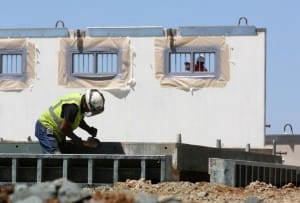by Lizzie Buchen, Californians United for a Responsible Budget
This is CURB’s response to the California Department of Corrections and Rehabilitation’s “An Update to the Future of California Corrections,” released Jan. 20 to update its master plan from 2012:
This report reveals the failure of CDCR’s efforts to sustainably reduce incarceration and resolve the humanitarian crisis of its prisons and instead outlines a concerning vision for an expanded and more powerful prison system. Four years ago, the department laid out plans to end its deadly prison crowding, stop shipping prisoners out of state against their will, and save billions of dollars. Yet as of the release of this new plan, the CDCR remains under federal court oversight, incarcerates more than 5,000 people in other states, and has a budget that has grown by nearly $1.5 billion since 2012.
This report reveals the failure of CDCR’s efforts to sustainably reduce incarceration and resolve the humanitarian crisis of its prisons and instead outlines a concerning vision for an expanded and more powerful prison system.

Instead of presenting plans for a durable solution to prison overcrowding, the CDCR is evading responsibility for its failures, blaming the federal judges for affirming the 137.5 percent overcrowding limit upheld by the Supreme Court, and pointing to undefined “complex factors” to explain why the promised “population and budget reductions did not materialize.” During the course of these four years, the governor vetoed several bills that could have further reduced the population.
He opposed every population reduction measure ordered by the courts and did not support Prop 47, even though he appears to take credit for the success of these reforms. These actions amount to a persistent, ruthless and brazen resistance to change.
When Gov. Brown began pushing realignment as his solution to overcrowding, many organizations, including CURB, warned that it was not a sustainable solution; that it would inevitably lead to jail expansion at the county level; and that it was no substitute for substantive and necessary sentencing reform. Today, more than 40 counties are expanding their jail systems, and the governor has just put forth a budget that adds another $250 million for jail construction and predicts a growing prison population.
As we have said for years, the only sustainable solution is to reduce the prison and jail population and start closing prisons.
As of the release of this new plan, the CDCR remains under federal court oversight, incarcerates more than 5,000 people in other states, and has a budget that has grown by nearly $1.5 billion since 2012.
Despite its original requirement to close the deteriorating prison in Norco by this June, the CDCR states that “no prison is proposed for closure in the near future.” Instead, it lays out a long-term plan of renovating or replacing the state’s 12 oldest prisons, which indicates intentions to sink billions more of Californians’ tax dollars into a decaying system rather than plan to maintain or increase any reductions to the population and raises a question of whether the governor plans to further expand the prison system.
The state must stop funneling money into reinforcing its brutal and destructive prison system.
The plan also portends an expanded role for the CDCR as it continues extending its reach into communities, following people after they leave prison under the guise of “reentry.” And with increased funds for prison-based programs, the department seeks to revamp its tarnished image into that of a system seemingly focused on rehabilitation.
In reality, the system’s deep and pervasive culture of abuse, racism and dehumanization, coupled with its fundamental punitive premise, interfere with any attempts at true rehabilitation and support.
The CDCR’s renewed efforts to build its way out of its crisis are further evidence that the state is trying to delay the inevitable: Comprehensive and retroactive sentencing reforms that will significantly and sustainably reduce the prison population. These reforms must include people with convictions for “serious” and “violent” offenses, who now make up more than 93 percent of the California prison population and who are serving sentences that are wildly out of step with the moral standards of most of the world.
The system’s deep and pervasive culture of abuse, racism and dehumanization, coupled with its fundamental punitive premise, interfere with any attempts at true rehabilitation and support.
With the futures of the state’s most disadvantaged communities at stake, the state must stop funneling money into reinforcing its brutal and destructive prison system. We must begin making investments that will sustainably reduce incarceration, close prisons and provide true opportunities for people in low-income communities to thrive.
Lizzie Buchen of Californians United for a Responsible Budget (CURB) can be reached at lizzie@curbprisonspending.org or 1322 Webster St. #210, Oakland, CA 94612, 510-435-1176.





